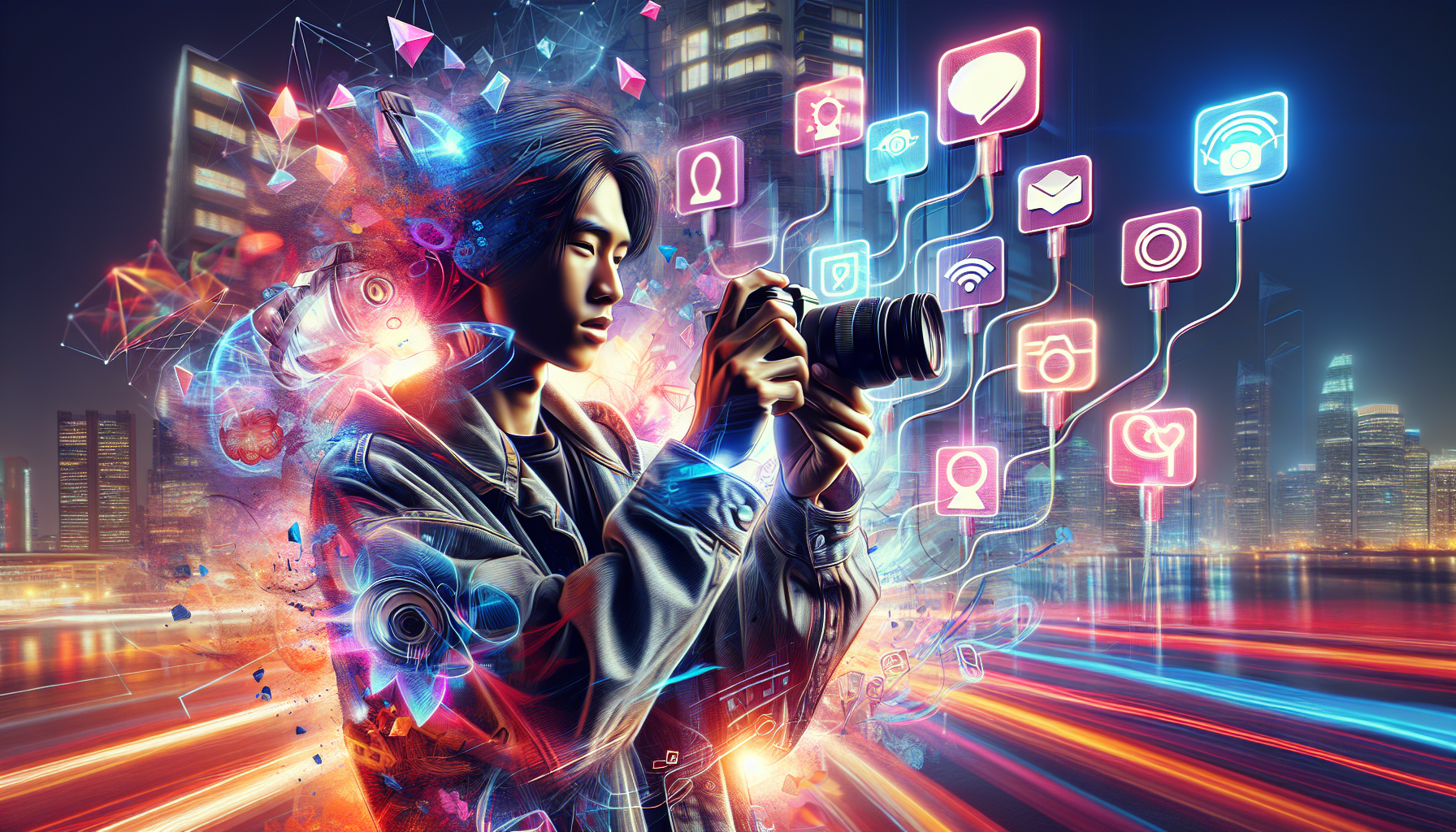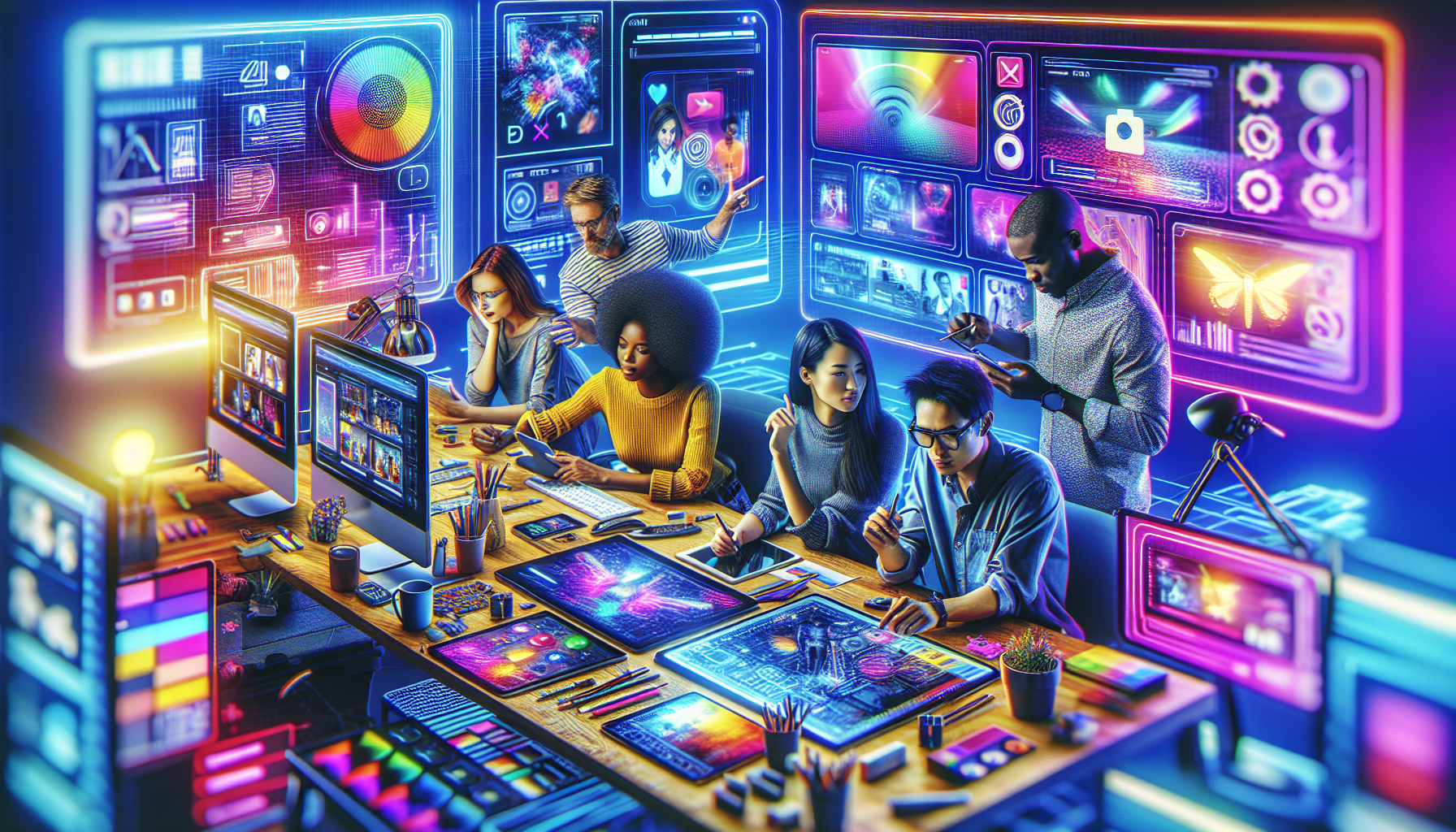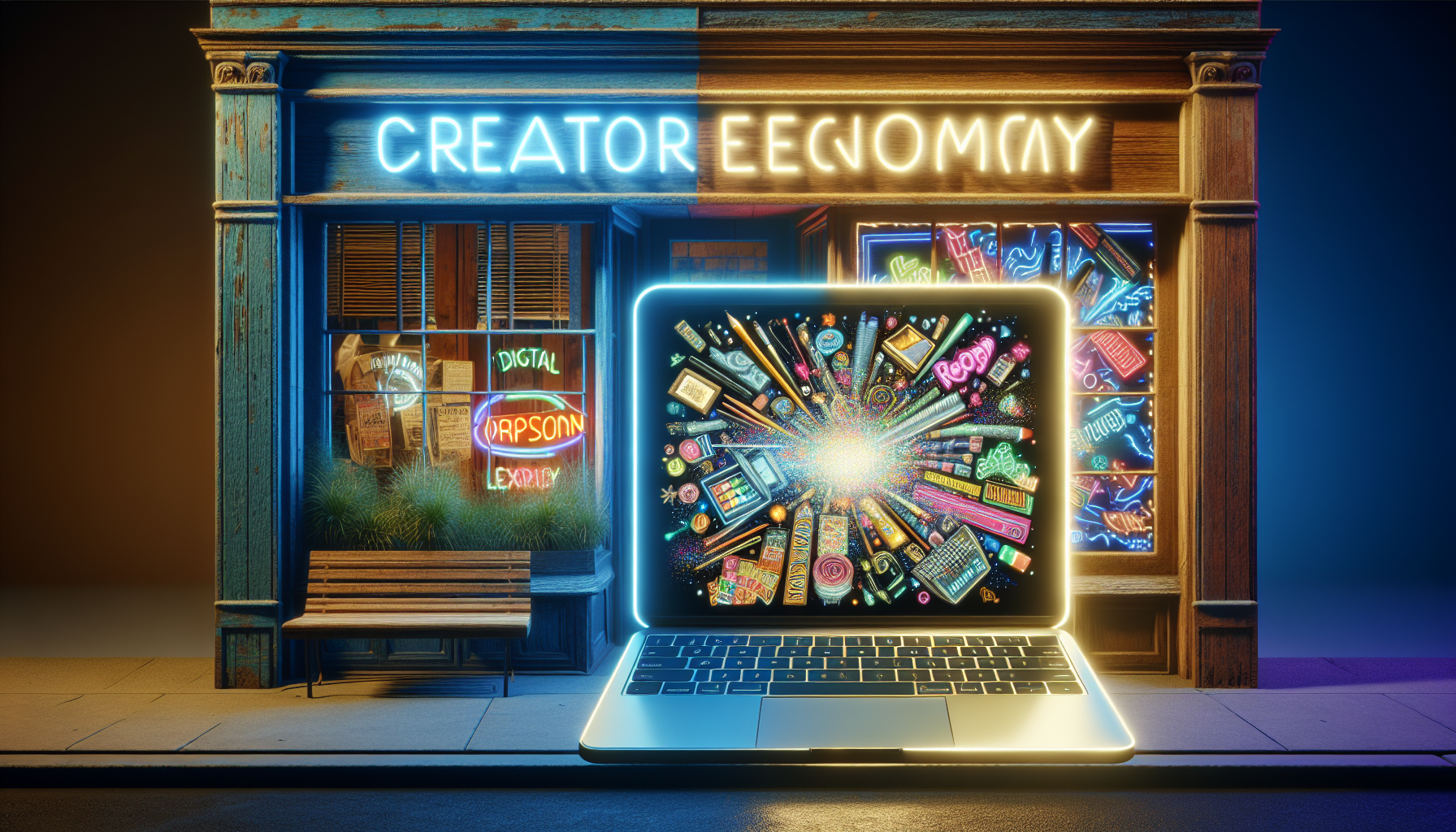
 Over the past decade, the rise of influencer marketing has redefined the economic landscape and shaped the modern creator economy in unprecedented ways. As a centerpiece of digital culture, influencers have leveraged platforms like Instagram, YouTube, and TikTok to cultivate vast audiences, opening up new avenues for businesses and creators alike.
Over the past decade, the rise of influencer marketing has redefined the economic landscape and shaped the modern creator economy in unprecedented ways. As a centerpiece of digital culture, influencers have leveraged platforms like Instagram, YouTube, and TikTok to cultivate vast audiences, opening up new avenues for businesses and creators alike.
Influencers at the Helm
– Originally seen as a niche activity, influencer marketing has grown into a powerhouse, estimated to be worth $13.8 billion in 2021. Creators wielding substantial influence over their followers offer brands a direct line to consumers, often translating into enhanced trust and engagement.
– Notable figures like Emma Chamberlain and MrBeast underscore this shift, providing brands with authentic content that resonates more deeply with audiences than traditional advertising methods.
Democratizing the Marketplace
– Influencers come from diverse backgrounds and often emerge from grassroots levels, allowing for democratization within markets that were once gatekept by traditional media. Platforms such as TikTok amplify this egalitarian ethos, enabling creators to connect rapidly with millions worldwide.
– This shift has pressured traditional businesses to adapt. Retail giants like Sephora and Nike are increasingly partnering with diverse micro and macro-influencers to reach niche markets previously overlooked in mainstream campaigns.
New Pathways for Monetization
– With the emergence of platforms like Patreon and Substack, influencers can bypass traditional advertising and seek direct monetization from their audience. Subscription models, merchandise sales, and paid partnerships provide multiple revenue streams for creators.
– The ‘Beauty YouTuber’ phenomenon exemplifies this model, where influencers monetize through product launches, virtual classes, and affiliate links, all while nurturing passionate communities around their brands.
Redefining Cultural Norms
– Influencers have not only revolutionized business models but also contributed to cultural shifts, promoting values such as diversity, inclusivity, and authenticity. Influencers like Lizzo use their platforms to advocate for body positivity, reshaping societal standards and sparking meaningful conversations.
With the dynamic interplay between savvy creators and evolving digital tools, influencer marketing is here to stay, leaving an indelible mark on how we interact with brands and consume content in today’s digital age.
economic impacts on traditional businesses
Traditional businesses are experiencing significant shifts due to the burgeoning influence of creators in the new economic landscape. With influencer marketing becoming a dominant force, conventional firms must adapt or risk obsolescence.
Competitive Edge and Challenges
As influencers leverage their platforms to engage consumers with authenticity and immediacy, traditional businesses face the challenge of aligning with this new dynamic. Many are redirecting advertising budgets from traditional media to influencer partnerships, allowing them to tap into niche consumer bases with higher engagement rates. This shift requires businesses to rethink their marketing strategies, adapt to digital-first approaches, and focus on building genuine relationships with consumers through these new channels.
Real-World Adjustments
– Case Study: L'Oréal
L’Oréal has embraced influencer marketing by creating an influencer network to promote its beauty products. Collaborations with beauty influencers across Instagram and YouTube have allowed the brand to reach younger audiences more effectively than through traditional advertising channels.
– Retail Adaptation: Brick-and-mortar retailers are also incorporating influencer insights into physical store experiences, using influencer-endorsed products and leveraging social media campaigns to drive foot traffic.
Platform Influence
Platforms like Instagram and TikTok have become crucial for traditional businesses aiming to connect with younger, tech-savvy consumers. By partnering with influencers, companies can leverage the platforms’ advanced targeting capabilities and algorithms to maximize reach and impact.
Revenue Streams Revisited
– Diversified Income Models: Brands are exploring diverse income avenues by collaborating with influencers on exclusive product lines or limited-edition releases. This not only generates buzz but also creates a sense of urgency and exclusivity among consumers.
– Crowdsourced Campaigns: Engaging with micro-influencers allows brands to crowdsource creative content that resonates with specific audience segments, fostering a sense of community and trust.
Broader Cultural Impacts
The rise of influencers is not just transforming business models; it’s also reshaping consumer expectations and cultural norms. Consumers now expect transparency, engagement, and authenticity—values that traditional businesses must adopt to stay relevant.
As influencers continue to redefine the creator economy, traditional businesses must be agile, leveraging these partnerships to innovate and thrive in the shifting economic landscape. By embracing the power of digital influence, they can unlock new opportunities for growth and brand loyalty in a world increasingly driven by digital content and consumer interactions.
shifting consumer behavior
Influencers have revolutionized consumer behavior, leading to a dramatic shift in how individuals interact with brands and make purchasing decisions. This change is not just a trend but a fundamental transformation in consumer culture, influenced heavily by the rise of the creator economy and digital platforms.
Authenticity and Relatability
Consumers today are drawn to authentic and relatable content. Influencers like Sarah’s Day on Instagram connect with their audiences through genuine storytelling and transparent product recommendations. This authenticity fosters a sense of trust and loyalty, encouraging consumers to rely more on influencer suggestions than traditional advertisements.
Empowered Decision-Making
– Consumers are now more informed and selective, as influencer content provides detailed insights and honest reviews that were previously unavailable through standard marketing.
– Platforms like YouTube serve as research hubs where consumers watch unboxing videos, tutorials, and product reviews, fundamentally altering their decision-making process.
Community Engagement
– Through interactive content and real-time engagement, influencers build communities around shared interests and values. Facebook Groups created by influencers allow followers to exchange experiences and opinions, enhancing the communal aspect of consumption.
– These communities influence purchasing decisions, with followers often prioritizing products recommended within these networks over those suggested by traditional marketing.
Increased Expectations
The shift towards influencer-driven consumption has reshaped consumer expectations, demanding more from brands in terms of transparency, sustainability, and corporate responsibility. Influencers like Greta Thunberg amplify these demands, pushing brands to adopt more ethical practices in response to consumer pressures.
The Power of Personalization
Influencers tailor content to specific audience segments, driving a trend towards personalized marketing that traditional channels struggle to replicate. This personalization increases consumer satisfaction and brand affinity, making influencer recommendations more impactful.
The reshaping of consumer behavior by influencers signifies a broader shift in the economic landscape, where the power of personalized, authentic content and community-driven engagement redefines the pathways to consumer trust and loyalty. As the creator economy continues to grow, understanding these shifting dynamics will be crucial for brands seeking to capture the modern consumer’s attention and purchasing power.
new monetization strategies
The new era of the creator economy has transformed influencers into entrepreneurial juggernauts, with innovative monetization strategies reshaping how digital personalities generate income. Influencers are no longer reliant solely on advertisements; they’re diversifying income streams to thrive in this economic landscape.
Subscription Models
Platforms like Patreon and Substack have become central to influencers looking to foster deeper connections with their followers and create sustainable revenue. By offering exclusive content and personalized interactions, influencers such as Matt D’Avella and Amanda Palmer have successfully turned loyal audiences into paying subscribers, ensuring a consistent income beyond ad revenue.
E-commerce and Merchandise
Merchandise sales provide another lucrative avenue. Influencers are launching branded products, leveraging their personal brand to drive sales. YouTube star Jeffree Star, for instance, has monetized his following by creating and selling his own line of cosmetics, turning his social influence into a tangible and profitable brand.
Paid Partnerships and Brand Collaborations
Influencers frequently engage in sponsored collaborations to promote products authentically aligned with their brand. This is prevalent on platforms like Instagram and TikTok, where high engagement rates can translate into impressive earnings. Fitness influencer Kayla Itsines’ collaboration with notable health brands exemplifies how influencers can maintain authenticity while monetizing content.
Digital Products and Workshops
Offering online courses and workshops allows influencers to capitalize on their expertise. Creators like Skillshare instructors or those on platforms like Teachable provide valuable knowledge while monetizing their skills. By transforming their niche interests into educational content, influencers expand their revenue potential and community impact.
NFTs and Digital Collectibles
The rise of NFTs has opened new monetization opportunities, particularly for digital artists and creators. Influencers like Grimes have successfully sold digital art through NFTs, embracing this cutting-edge technology to connect with their audience in unique ways. NFTs allow influencers to offer exclusive digital assets, paving the way for innovative income models.
This innovation in monetization strategies illuminates a broader shift in the economic landscape, where influencers harness the power of digital platforms to diversify income and sustain their careers. As they redefine earning potential in the creator economy, these strategies illustrate the adaptability and creativity crucial for success in the digital age.
future trends and predictions
The future of the creator economy promises to be as dynamic and transformative as its recent past. With influencers at the forefront, we’re seeing a convergence of technology and creativity that is poised to redefine the economic landscape in new ways.
Technological Integration
– Influencers will increasingly harness cutting-edge technologies like artificial intelligence (AI) and virtual reality (VR) to enhance content creation and audience engagement. Expect platforms like YouTube to offer more AI-driven analytics for optimized content targeting, while VR can create immersive experiences for followers, pushing the boundaries of traditional content consumption.
The Rise of Niche Communities
– The growth of niche communities driven by influencer-led platforms such as Discord and Clubhouse allows creators to engage with their audiences more intimately. These platforms provide spaces for like-minded individuals to share knowledge and interests, enabling influencers to foster deeper connections and offer tailored content.
Emergence of Decentralized Platforms
– Blockchain technology is fostering the rise of decentralized platforms, reducing creators’ reliance on traditional social media for revenue. This shift empowers influencers to have more control over their digital assets and income streams, facilitating greater independence in the creator economy.
Evolving Collaborations
– The future will witness more sophisticated brand collaborations. Influencers are expected to partner not just for monetary gain but to co-create products, ensuring authenticity and alignment with their personal brand values. Collaborations will likely extend into areas such as sustainable and ethical products, reflecting the growing demand for social responsibility.
Global Reach and Cultural Exchange
– As internet accessibility improves worldwide, influencers from diverse backgrounds will emerge, providing fresh perspectives and diversifying content offerings. This global influence will enable cross-cultural exchanges and promote inclusivity, enhancing the richness and diversity of available digital content.
The future of the creator economy is ripe with potential, driven by technological advancements and a shift towards more meaningful and sustainable connections between influencers and their audiences. As influencers continue to innovate, they will undoubtedly redefine income generation and cultural trends, ensuring the creator economy remains a pivotal force in shaping the digital age.

